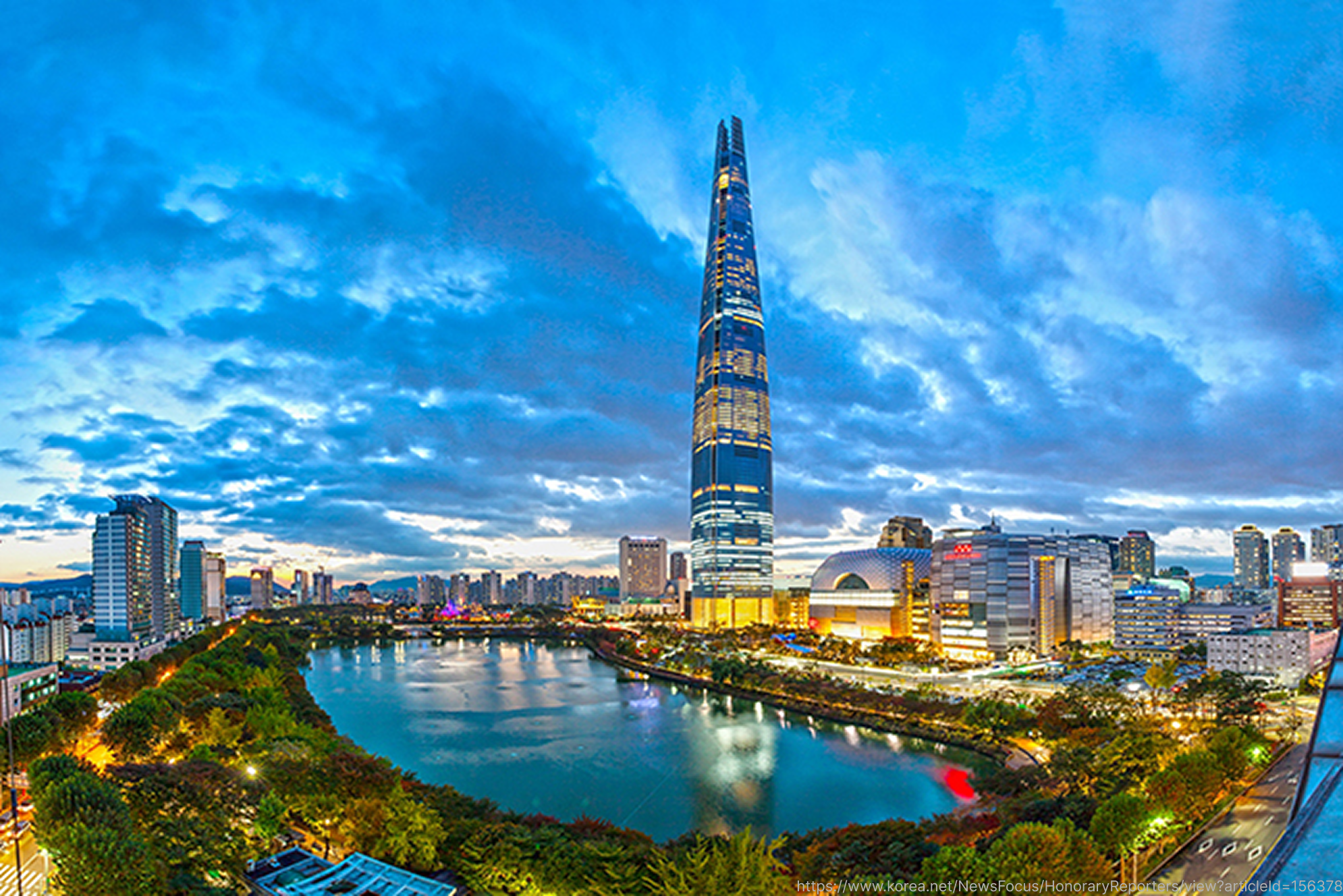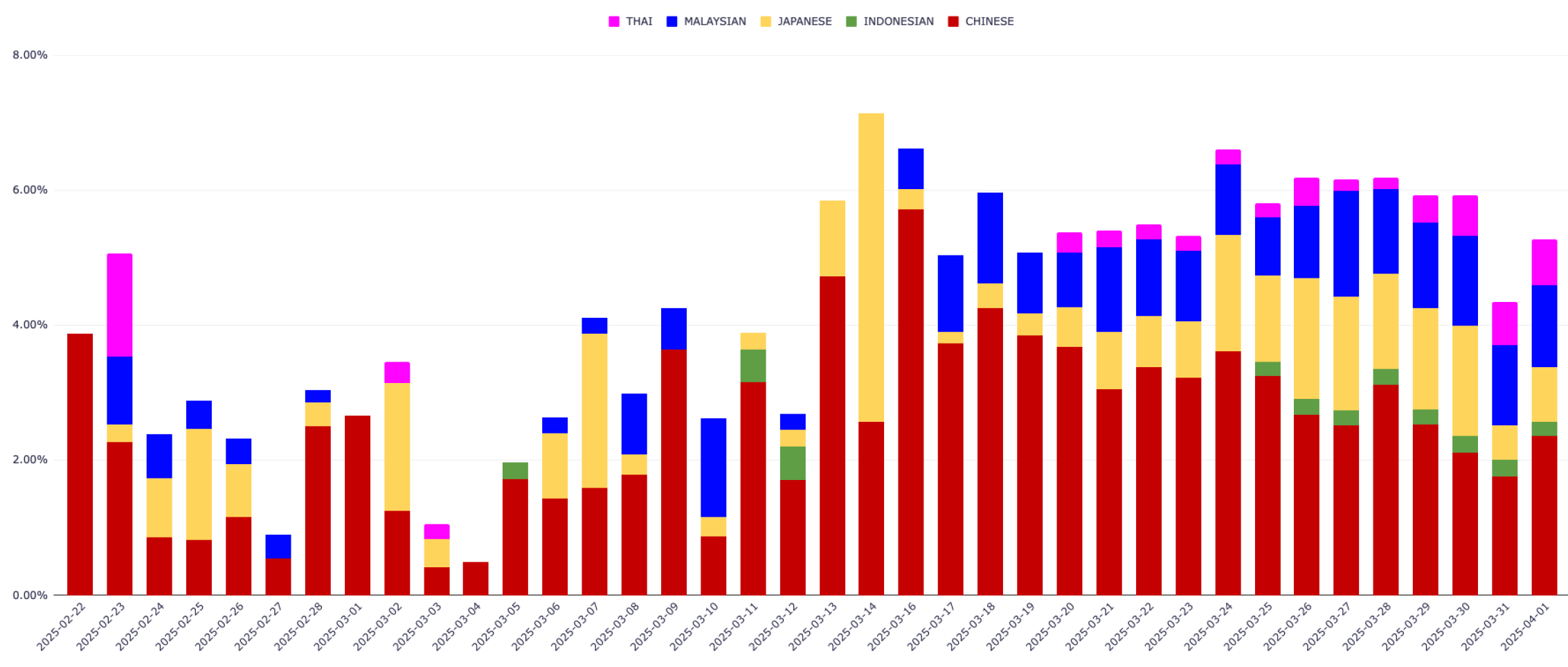
Jamsil, one of Korea’s most vibrant and bustling districts, is a hotspot for visitors from all around the world. Home to attractions like Lotte World, Jamsil Stadium, and Seokchon Lake, it’s no surprise that this area sees a diverse mix of languages spoken by tourists and residents alike. But just how diverse is the linguistic landscape of Jamsil? Let’s dive into the fascinating insights!
The Strong Presence of Chinese Visitors
China and South Korea share deep economic, cultural, and historical ties, and this is reflected in the number of Chinese-speaking visitors in Jamsil. Chinese accounts for a noticeable portion of visitors, fluctuating between 0.4% and 5.7% on any given day.
Several factors contribute to this strong presence. Firstly, South Korea has long been a popular travel destination for Chinese tourists, thanks to its proximity, visa policies, and cultural appeal, including the global influence of K-pop, K-dramas, and Korean beauty products. Jamsil, in particular, attracts a significant number of Chinese visitors due to its luxury shopping centers, duty-free stores, and well-known attractions like Lotte World and the surrounding entertainment complex. Additionally, the presence of a sizable Chinese expatriate community, including students and business professionals, further bolsters the number of Chinese-speaking individuals in the area.
With the increasing number of Chinese travelers, businesses in Jamsil may benefit from enhancing Chinese-language services, from signage to customer support, ensuring a smoother and more welcoming experience for this key demographic. Hotels, restaurants, and retail stores could further capitalize on this trend by offering tailored experiences such as mobile payment options preferred by Chinese tourists, like Alipay and WeChat Pay.

Language Spikes: Events & Holidays Matter!
Interestingly, certain languages experience unexpected surges on specific dates, likely due to events or holidays. For instance, Japanese visitors reached 4.56% on March 14th, while Chinese visitors reached 2.58%. These fluctuations suggest that international events, special promotions, or seasonal festivals significantly impact visitor demographics.
One notable example is the increase in Japanese and Chinese visitors around March 14th, known as White Day. White Day is a follow-up to Valentine’s Day, where men traditionally give gifts—often candies—to women in return for chocolates they received on February 14th. Though not as widely celebrated as Valentine’s Day, White Day remains a commercial and cultural event in Korea, prompting many businesses to run promotions and special events. In fact, Lotte Department Store in Jamsil held multiple pop-up stores and marketing campaigns around this time, likely drawing in more tourists interested in shopping for gifts and souvenirs.
For businesses and event planners, understanding these patterns can be a game-changer. Aligning promotional activities with high-traffic days for specific language groups can maximize engagement and sales. Whether it’s launching marketing campaigns targeting specific international holidays or offering limited-time deals catering to cultural preferences, tapping into these trends can significantly boost business success.

A Steady Stream of Southeast Asian Visitors
Jamsil isn’t just attracting Chinese visitors—it’s also a favorite spot for tourists from Japan, Indonesia, Malaysia, and Thailand. While their numbers remain relatively small compared to Chinese visitors, they are consistently present.
Several factors contribute to this steady flow. First, South Korea has strong tourism and business ties with Southeast Asia. With the increasing popularity of K-culture in these regions, including Korean dramas, beauty trends, and cuisine, many Southeast Asian tourists see Korea as a must-visit destination. Additionally, budget airlines and visa-free travel policies for select Southeast Asian countries make Jamsil a convenient and attractive destination.
Moreover, Jamsil’s shopping, entertainment, and food scene cater well to Southeast Asian visitors. Many travelers from Indonesia and Malaysia, for instance, seek out halal-friendly dining options, which are becoming increasingly available in the area. Japanese tourists, on the other hand, have a long-standing connection with South Korea, making it a popular weekend getaway for shopping and leisure.
This steady influx of Southeast Asian tourists presents an opportunity for local businesses to provide better language support, including translated menus, signs, and customer service in Japanese, Thai, and Bahasa Indonesia. Providing halal-certified restaurants, Muslim-friendly prayer spaces, and marketing campaigns that cater to Southeast Asian preferences could further enhance their experience and encourage repeat visits.
Jamsil’s Linguistic Landscape: What It Means for You
Jamsil’s visitor data paints a vivid picture of the area’s international appeal:
Chinese visitors are a key audience with consistent representation.
Event-based spikes suggest a need for targeted marketing strategies.
Southeast Asian tourists are a steady presence, highlighting the need for language support.
Arabic, Greek, and Russian visitors are rare, but businesses looking to expand their reach could tap into these niche markets.
For businesses, understanding these language trends can lead to smarter strategies—better multilingual services, more effective marketing, and improved overall visitor experiences. So, next time you’re in Jamsil, listen closely—you just might hear a fascinating mix of languages that reflects the ever-growing global charm of this Korean hotspot!
Curious about how we uncovered these insights? Explore the OpsezN Language Analytics Solution!
Jamsil’s Tourism Trends: Who’s Visiting? Jamsil’s Tourism Trends: Who’s Visiting?Jamsil’s Tourism Trends: Who’s Visiting?

